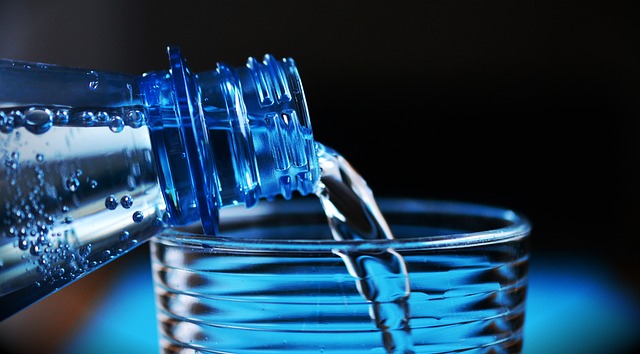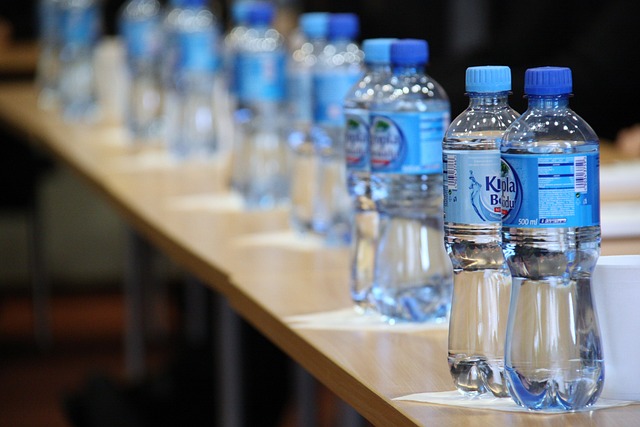
There are typically 8 to 12 ounces in a water bottle. That equals about a half-liter of them. There are, however, larger bottles available that can hold three or four gallons of liquid. Take a measurement that would fill an eight-ounce glass to determine how much is in a bottle. Next, determine how much is still in the remaining glass using the same technique.
One cubic centimeter, or half a litre, is equivalent to one liter in the metric system. A kilogram of liquid water weighs one liter. Take into account the fact that a glass of water has 240 mL and a liter has one gallon to understand how many gallons are in a bottle of water. This indicates that one gallon of liquid is contained in one liter of water. Continue reading.
How Many Ml in Water Bittle?
It’s critical to comprehend how liquid is measured in milliliters if you’re wondering how much water is in a bottle. Water bottles typically hold eight to twelve ounces, or roughly half a liter. Three to four gallons of liquid can be stored in larger bottles. The typical eight-ounce glass has a 240 milliliter capacity. Use a liters to milliliters converter to simplify the process of measuring liquid.
One cubic centimeter, or 100 milliliters, equals one liter. A litre is equal to 100 milliliters in the United States. In Europe and the United Kingdom, it is one cubic centimeter (1,000 mL). The density of one milliliter of water is 0.685 g/L. By dividing a milliliter’s volume by its density, you can also convert it to a liter.
How Many Water Bottles?
There are 16.9 fluid ounces (oz) of liquid in a typical water bottle. We make the assumption that a bottle holds 17 oz when calculating the volume of water in a gallon. The volume of a bottle varies due to the various materials and sizes used to make bottles. A gallon is 4.546 liters, while an ounce of liquid in one cup is equivalent to 8 ounces in another.
Concerns about the size of single-use plastic water bottles are fairly common. They are easily deformed and add to the growing amount of waste in our landfills. The world sold more than 480 billion plastic water bottles in 2016; that’s enough plastic to wrap the equator twice! By 2021, 583.3 billion water bottles will be consumed annually, predicts Euromonitor International.
How Many Ml?
Thirty pounds is the weight of a sixteen-ounce bottle compared to three hundred and thirty pounds for a gallon of water. Liquids are weighed according to their density, and the US and UK systems measure volume in slightly different ways. The difference between a US quart and a UK quart is 1.786 US gallons, or one-twelfth of a liter. A forty-nine-ounce bottle contains roughly 400 milliliters, whereas a four-ounce bottle of water weighs four-and-a-half pounds.
A two-liter water bottle typically holds eight to twelve ounces of liquid, or about half a liter. Larger bottles, however, have a capacity of three to four gallons. Use the liters-to-ml converter to calculate the exact number of ml in a water bottle. You can calculate how much water is in one bottle using this formula.
How Many Liters of Water is in a Water Bottle?
How many liters of water are contained in drinking water jars may be on your mind. A gallon of water contains 128 fluid ounces, so it is best to keep that in mind. Fluid ounces are used to calculate a water bottle’s capacity. Three-quarters of a gallon is equal to one quart. Half a liter equals one quart, and one US gallon is equal to one liter.
1000 milliliters make up a liter. You can therefore fill up eight glasses with a 2 liter water bottle. A typical glass holds eight ounces, or roughly 240 milliliters, as a point of comparison. Three and a half liters, or 3.8 liters, make up a quart.
16 ounces, or 500 milliliters (mL), is the typical size of a water bottle. Three hundred seventy-one liquid ounces make up a quart of liquid. A water bottle that holds half a liter can hold up to 7.5 bottles of the same size. As a result, 3.8 liters of liquid are contained in a typical one-liter water bottle.
A typical water bottle weighs 16.9 ounces (fl oz) and holds a quart. Men should generally consume 15.5 cups of fluid per day, while women should only consume 11.25 cups. About 167 ounces are in a typical water bottle. If you’re unsure of the most effective way to ensure that your body is receiving enough water, it’s crucial to comprehend the fluid volume of a water bottle.

How Many Bottles of Water is a Liter?
The liter, which is equivalent to one quart in the metric system, is used to measure fluid volume. The U.S. National Academies of Sciences estimate that an individual needs 15.5 cups of liquid per day. There are numerous other units of water volume, such as ounces, though they are more difficult to recall. So, how much liquid is in a liter and how many bottles of water does that equal?
The equivalent of a British pint in terms of weight is 33.8 ounces, or one liter. As a result, if you drink a litre of water per day, that equals eight cups. A fluid ounce is equivalent to one-sixteenth of a gallon, and one fluid ounce is the standard measurement. If you want to drink a quart of water, you must multiply that amount by the conversion factor because the metric ounce and the US pound are not the same.
A cubic volume of 10 centimeters across is equal to one liter. A liter of water would be roughly 3.7 gallons because one gallon is equal to about 750 milliliters. A person requires eight fluid ounces per day, according to the U.S. National Academies of Sciences and Engineering. It is one cup, or one rounded ounce. Consequently, a liter of water is equivalent to 2.7 gallons.
How Many Ounces is One Liter?
One liter equals 33.81 fluid ounces (US).
Although ounces are much more prevalent in the US, both liters and ounces are the two most popular measurements used to measure water volume worldwide.
For comparison, 0.26 gallons equals about 1 liter of water.
In other words, if you were to fill a half-gallon water bottle with one liter of water, you would fill the bottle to about half. With one liter of water, you could fill a gallon water bottle to about one-fourth of its capacity.
You should also be aware that there are two types of ounces for measuring water volume around the world:
- US ounces (1 liter = 33.814 Fl oz)
- UK ounces (1 liter = 35.19 Fl oz)
Because a pint is larger in the United Kingdom than it is in the United States, the weights of UK and US ounces are different. This distinction has existed for hundreds of years and continues to do so.
How Many Bottles of Water Should I Drink a Day?
Depending on your size, weight, and level of activity, you should drink a different amount of water. One to two liters of liquid per day are sufficient amounts of water for the majority of people. Your individual needs will determine how much liquid you should drink each day. If you exercise a lot, you might need to consume more fluids. Aside from that, if you sweat a lot, you should drink fluids regularly to make up for the fluids you lose through sweating.
The eight-by-eight rule is an old urban legend. It is not based on science how many ounces there are. 64 ounces of water per day is not harmful, but for some people, it may be a bit much. There are guidelines to help you choose how much to drink, but there are no other official recommendations. You should drink in accordance with the demands of your own body, as was already mentioned.
The recommendation to consume eight glasses of fluid per day is a good general one. Milk, juice, water, and tea are all examples of this. Unsweetened tea and sparkling water are other excellent alternatives. Another excellent source of fluids are salads and soups. Keep your alcohol consumption in check, though. Ice pop and some types of alcohol can increase your water intake. More than eight glasses of either alcohol or caffeine are not advised.
Why Do You Need to Drink Enough Water Every Day?
Drinking enough water during the day is important because it:
- Helps keep a normal body temperature
- Prevents adverse effects of dehydration
- Lubricates your joints and bones
- Helps keep your spine and body healthy
- Gets rid of waste materials and replaces them with healthy ones
To stay healthy and keep a healthy weight, it is important for everyone to try to drink enough water throughout the day. It supports our ability to reason clearly and carry on with daily activities. The proper operation of your body and joints also depends on getting enough water.
On the other hand, dehydration has a number of negative effects that are linked to inadequate water consumption. Unaware of the negative effects of insufficient drinking, many people experience it.
Here are the primary drawbacks of not getting enough water each day.
Headaches, Fatigue, Unclear Thinking
Constant headaches that last the entire day are the most frequent side effect of insufficient hydration. It may be as simple as not drinking enough water if you experience headaches frequently throughout the day.
You won’t be able to think clearly because your brain won’t function properly from a lack of water in it. Your productivity at work or in your daily tasks will suffer as a result.
Dehydration also contributes to fatigue. If you don’t drink enough water throughout the day, you won’t have as much energy as you could.
Slower Metabolism and Weight Gain
Insufficient hydration is also frequently accompanied by a sluggish metabolism. Your body won’t be able to process your food as quickly as it should, which will result in hard stools, and you’ll start to put on weight.
Dehydration has this very unfavorable side effect. You’ll feel fuller and less hungry, which will encourage you to stop eating as frequently. Drinking enough water will also help you feel more satisfied.
Dry Mouth, Dull Skin
Dehydration frequently causes a dry mouth as well. If you don’t drink enough, you might experience this more unpleasant feeling. It will be more challenging for you to breathe and even speak.
Dry skin will also result from dehydration. It won’t feel as supple and radiant as it would if you were drinking enough water. This is due to the fact that your skin won’t receive enough nutrients to remain healthy, which will cause it to become dehydrated and appear dull.
How Can We Drink Multiple Liters in a Day?
It will take planning and repeated reminders to consume multiple liters of water each day. The logistics of making sure you drink enough water throughout the day, like having water bottles that will inspire you to stay hydrated, are more important than anything else.
Using bigger water bottles is the best way to make sure you get enough water during the day. Water bottles in the half-gallon or gallon sizes work best.
Since you don’t have to keep refilling the bottle, they are incredibly effective at giving you enough water for the day. It will also be simpler to keep track of how much water you’re consuming.
To make it easier to stay hydrated throughout the day, HydroJug offers larger water bottles. The recommended daily water intake ranges from half a gallon to a gallon (depending on the various factors mentioned above), so using these larger bottles will make it easier for you to meet your objectives.
A 32 oz tumbler will work even better for you if you are on a budget and cannot afford a large water bottle. You can store your water in a smaller bottle and carry it around with you thanks to a smaller bottle like this. If you’re always on the move and don’t have a lot of storage space, it’s the ideal solution for you.
Read about How Many Times Can You Use A Keurig Cup?



